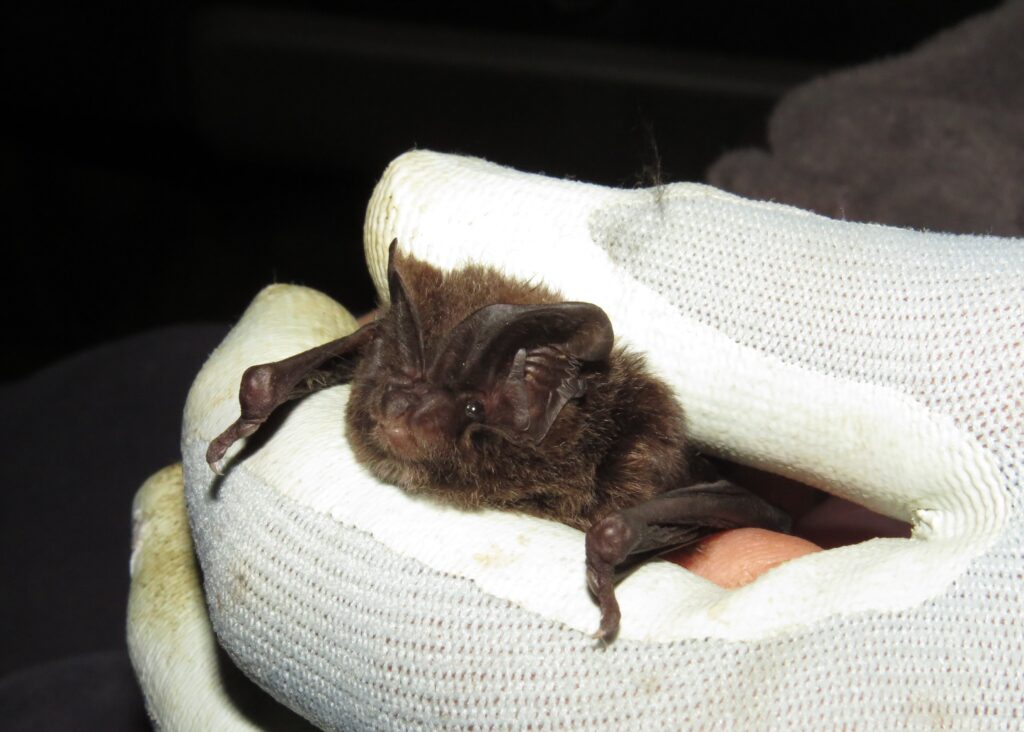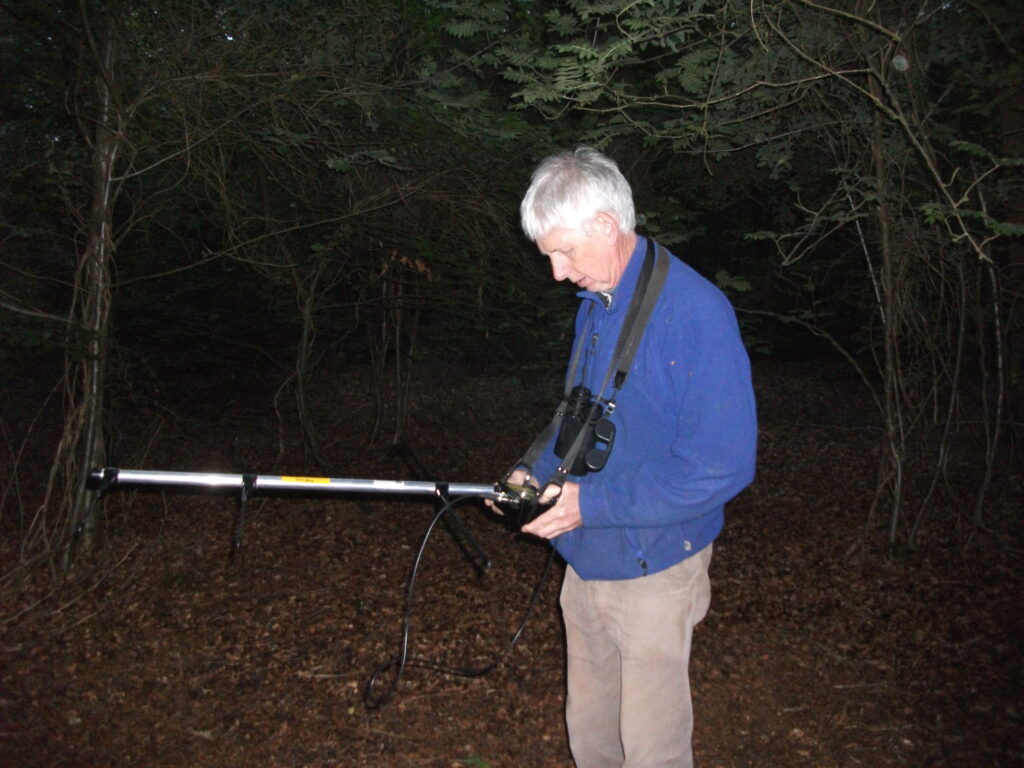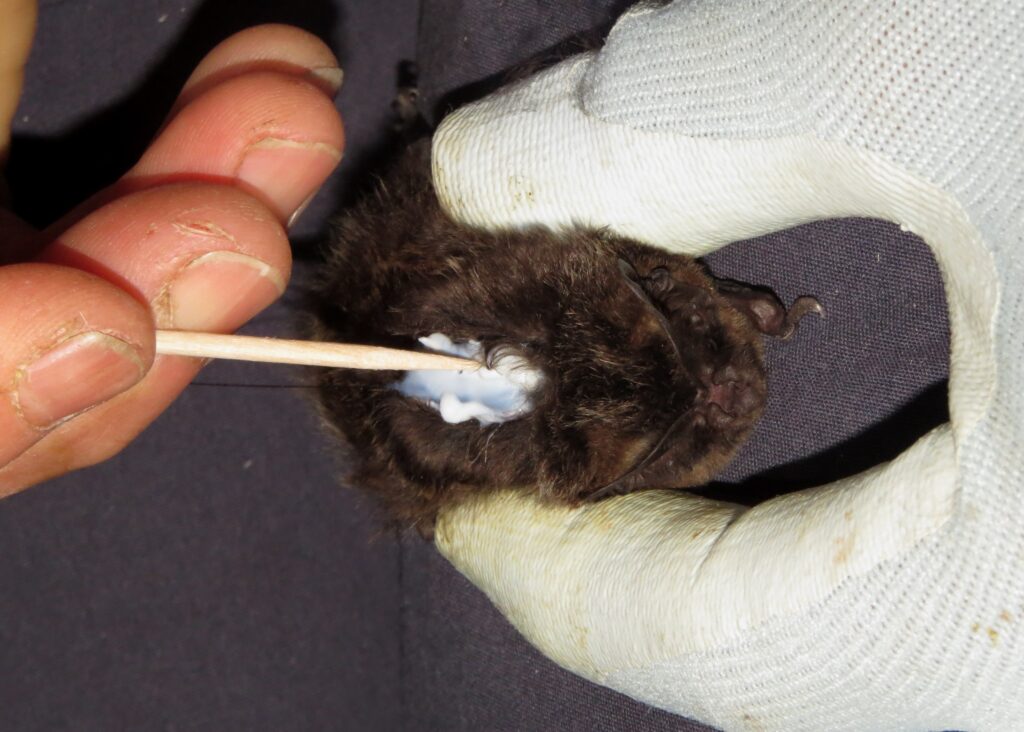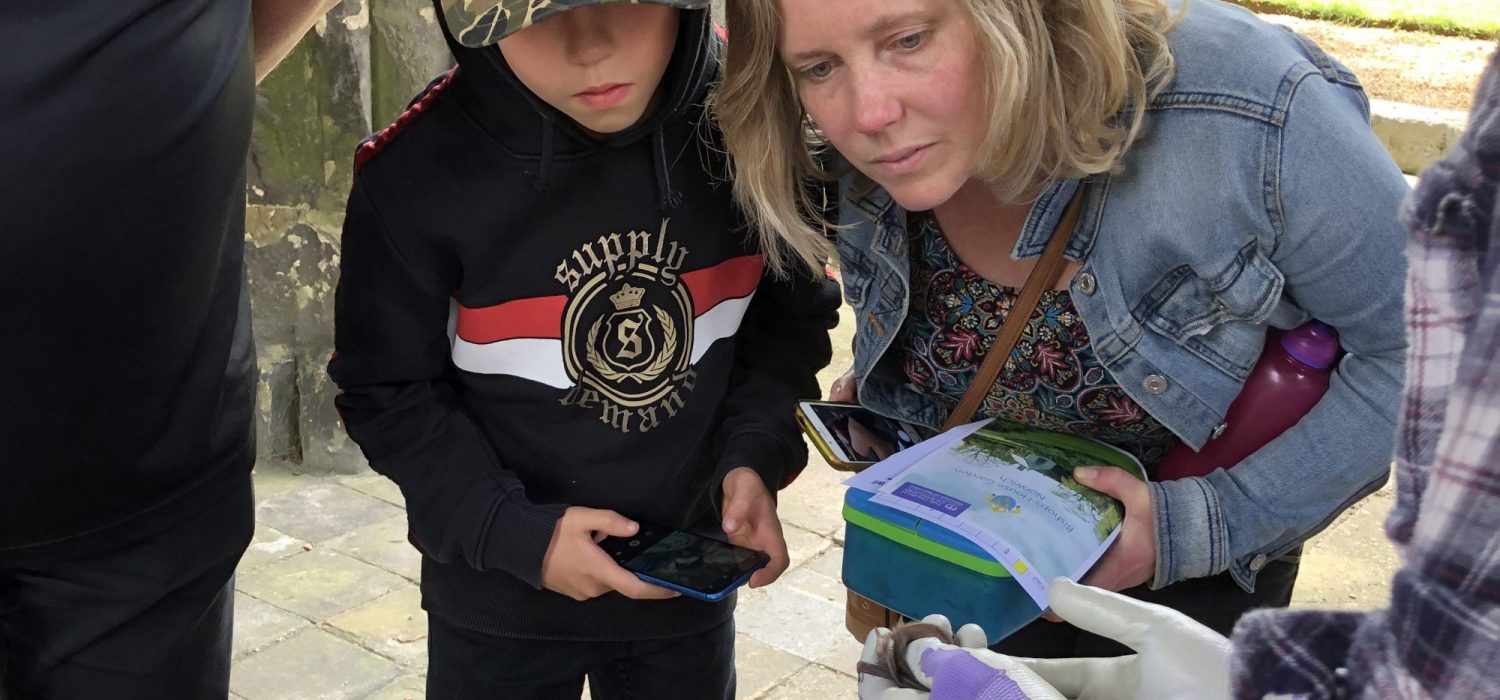Barbastelles are rare in both in the UK and across Europe. They are one of only two of our UK bat species to be listed as ‘Near Threatened’ globally on the IUCN Red List.

Thanks to work since 2007 by the Norfolk Barbastelle Study Group (NBSG) we now know this species is widespread across Norfolk. It was widely cited as a species of riverine woodlands but in Norfolk it is well-established in the predominantly arable landscape.
28 Barbastelle maternity colonies have been located across the county, all of which are in woodlands with the exception of the Paston Great Barn SAC colony. Maternity colonies occur in a range of Norfolk landscapes, from the more heavily wooded Holt-Cromer ridge to the smaller scattered woodlands of south Norfolk. The absence of colonies in the fens to the west and The Broads to the east is probably a reflection of the lack of studies in those areas.
The bats show a clear preference for roost sites under loose bark, although splits and fissures may also be used. They use a variety of tree species with Oak the most frequent, post-maternity a wider range of trees are used. The studies seem to indicate that the roost feature rather than the tree species is the key factor in choice of site. We are not aware of any maternity colonies in buildings in Norfolk other than at Paston Great Barn, but agricultural buildings are frequently used for day roosting and hibernation by individual Barbastelles.
Maternity colonies start to form in late May, initially as small groups in different roosts, but then coalescing to form larger groups in late June before the pups are born in early July. The colonies start to fragment in mid to late August once that year’s young are able to fly and multiple roosts are used. On average, surveys show individual females use between two and six different roosts during a tracking period of 7-14 days.

Emergence counts vary greatly. Pre-parturition emergence counts on individual roost trees range from two to 24 bats, with numbers increasing as the maternity roosts coalesce. Post-parturition counts for single roost trees have varied from 20 to 43 bats, which includes adults and juveniles.
Tracking has shown that after emergence from tree roosts Barbastelles remain within the woodland for up to 45 minutes, if the weather is wet & windy they may stay longer. At Paston Great Barn, where they fly inside the barn after emergence, it is not unusual to see them emerge before dark and follow flight-lines at great speed towards their foraging areas.

Radio tracking, has shown that foraging behaviour is quite predictable, with females following the same flight lines, and visiting the same areas night after night. Their flight usually follows linear features such as woodland edges, watercourses, hedgerows and green lanes. For colonies within 5km of the coast, coastal cliffs are a major foraging area.
Surprisingly for a wide-ranging fast-flying species the data has shown that adult females only travel an average of 3.5km from the maternity roost, up to maximum distance of 5.5km.
A super colony of Barbastelle bats is threatened by the proposed NDR ‘Western Link’ dual carriageway road. Stop the Wensum Link www.stopthewensumlink.co.uk are campaigning against the building of the road with the protection of the colony being a major factor. The vast majority of the details for this article are taken from a review paper written by Jane Harris in 2019. You can see the full paper here.
